Serious birders possess two main traits: a love of birds, which I share, and a love of organized lists, which I most definitely do not.
Birding is a popular hobby (arguably the most popular hobby) both in my profession and among Nature Conservancy members. I’ve had ample opportunity to watch birders watching birds. I am struck by their mania for anything with feathers. I am also struck by their mania for organization and lists. Trips are planned to maximize sightings. Big days and big years are plotted with the efficiency of military campaigns. Sightings are logged on spreadsheets and apps.
I lack this level of organization, as anyone who has visited my office will attest. I view spreadsheets much as I do dental visits: tolerable and at times necessary but hardly something to build your free time around. I like identifying birds, but ticking off species after species after species day after day loses its appeal quickly. I’m too easily diverted by sightings of mammals or fish or historic sites.
A guide in Brazil’s Pantanal once told me that he had a group of birders who got impatient because he spent too much time showing them a jaguar. A jaguar. I lack that level of discipline and focus. I also would frankly rather see the jaguar.
The obsessive side of birding makes for entertaining reading, and even humorous movie material. It can also be daunting for potential new birders. I recall another outing with a local bird club, where I found myself in a car for a day with a guy who delivered a non-stop monologue, Rain Man style, on warbler identification. As he droned on about wing color variation, for two hours, I could understand why someone might want to take up golf instead.
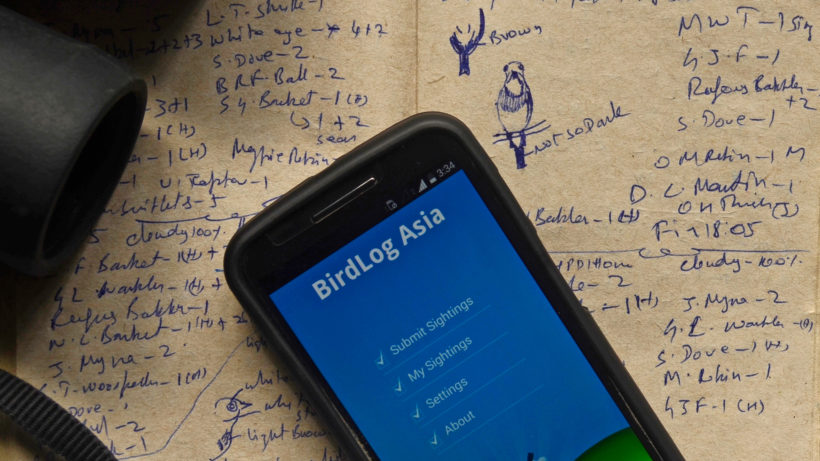
But fear not, haphazard birders. You do not have to launch big years or detail your sightings on spreadsheets. Here are some ways to enjoy all the fun of birding – without the need for list making. And I’d love to hear from readers: What’s your approach to birding?
Observe Birds
Yes, I know, it’s stating the obvious, but it bears repeating: birds are cool to watch. Not just to identify, but to watch. One of the reasons birding is a more popular pastime than mammal watching (much as I hate to admit it), is that birds are generally easy to observe. It also means you can readily watch them go about their daily lives: feeding, roosting, hunting, nesting, mating and more. Even common species exhibit fascinating behavior if you spend some time with them.
Go to the local city park and watch the annual soap opera that is mallard mating season. Observe, really observe, an American robin building a nest. Or a pileated woodpecker chiseling a hole. Or a Cooper’s hawk hunting the songbirds at your feeder. There’s a lot of drama playing out, right outside your door.
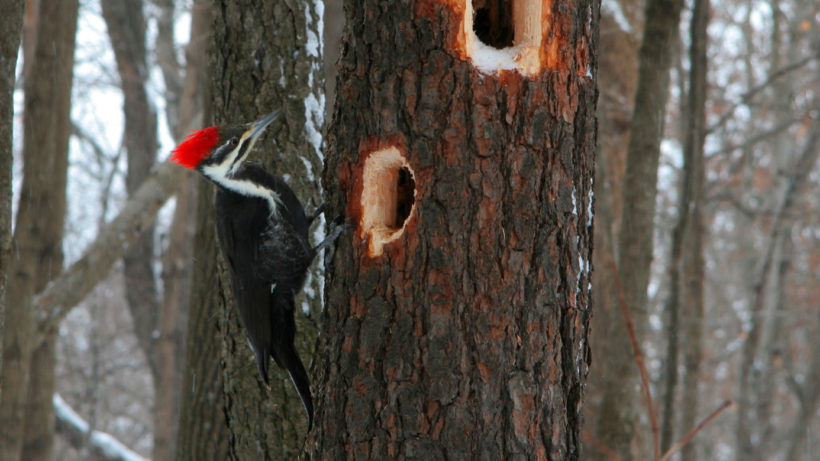
Learn the Neighborhood
Identifying birds is enjoyable, and the easiest way to start is by learning the birds in your local neighborhood. You can keep a list, or not, but the goal here is to know and observe your feathered neighbors.
My wife keeps a little notebook marking when we see some key species, like spotted towhees and Lazuli buntings. She stows it by our window. This can be an informal way to track when species show up each year.
It adds fun to a stroll around a park or neighborhood to know the birds you regularly see. You’ll almost assuredly notice more than you ever thought were there.
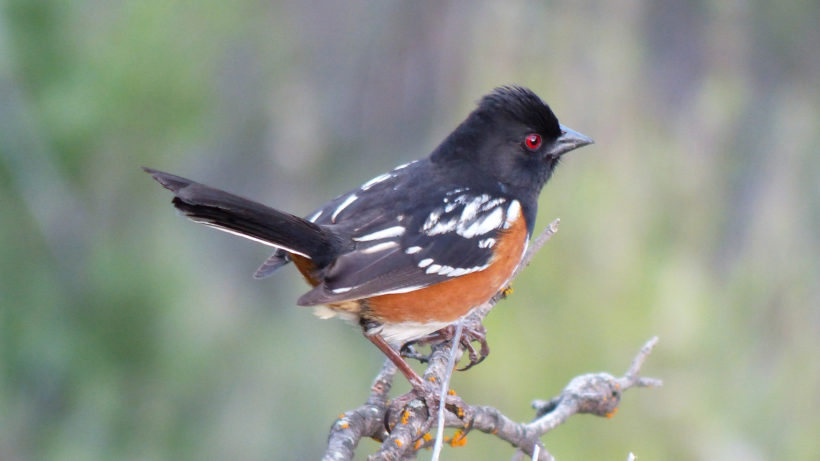
Enjoy Bird Spectacles
Many birding trips are organized to pack as many species sightings in as possible. This often means lots of driving, and little sleep. That can be a lot of fun, at least for some. But you could also organize a trip around seeing a natural spectacle, rather than seeing different species. Large concentrations of birds are some of the most awesome and inspiring natural wonders. You need time to take it in, not rush from one sight to the next.
You will probably see plenty of species as you watch the annual raptor migration at Hawk Mountain, Pennsylvania, but a big part of the experience is just taking in the totality of the migration. Other examples include the congregation of sandhill cranes on the Platte River, sage grouse and prairie chicken mating displays, sea bird nesting colonies and waterfowl and shorebird migrations. You can appreciate any of these even if you’ve never cracked open a field guide.
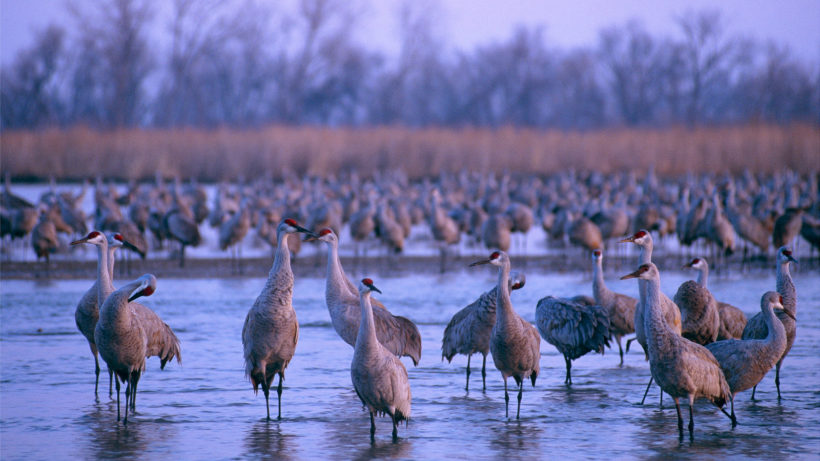
Learn Bird Songs
Serious birders have a keen grasp of bird vocalizations (and some even count birds they have heard as part of their list). But anyone can learn to identify the morning and evening chorus. It adds another element to enjoying birds.
There are apps that can help. Because I have a thing for field guides, I recently picked up The Backyard Birdsong Guide by Donald Kroodsma (Cornell Lab of Ornithology). It is an audio field guide in book format, and a very enjoyable way to learn the common birds around you.
Narrow Your Goals
Any serious birder will tell you that setting goals is a big part of the fun. But if a goal like a “big year” seems too big, just narrow your focus. You could set the goal of seeing an elusive local species. (For me, this year I’d like to see a merlin, a bird often reported locally that I’ve never seen). Or you could set a longer-term goal of, say, seeing all North America’s owls. This would be tremendously challenging but would require a different approach than having a big year.
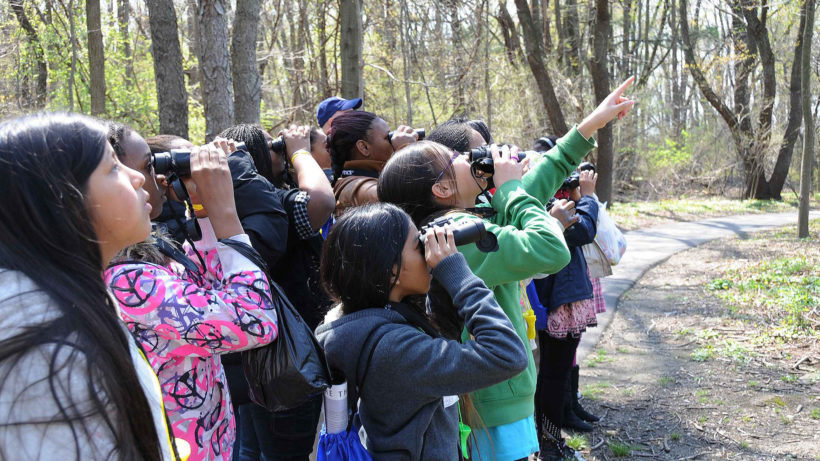
I have a special interest in observing and identifying waterfowl. I’m always on the lookout for new duck species. While I still struggle with warblers, I can tell you what duck just flew by, even if it is 10 minutes before dawn (admittedly, this is due to my love of waterfowl hunting, which also requires bird identification skill).
Spot Local Rarities
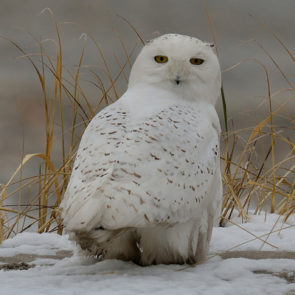
When a rare bird shows up, it’s common for avid birders to immediately book trips and converge on an area. That is an aspect of birding that many criticize. But “critter quests” are fun, and you don’t have to jet across the continent to do it. When a local rarity shows up – and local birding clubs and social media groups often send alerts – it can be tremendous fun to seek out that bird, even if you’re not a lister. A lot of times you’ll be rewarded with a beautiful species you would not normally see.
I’ve recently seen a northern hawk owl and a snowy owl, both unusual sights in Idaho. I’ve also had some outings that have not resulted in seeing the quarry, but it’s still fun just to be out there looking for something specific.
Please be sure to always respect the birds, people and property when you’re on your bird quest.
Participate in Citizen Science
Whatever your birding interest, you can make your observations count. Gathering bird observations from birders has become an important way for researchers to track conservation trends. Amateur sightings have documented the spread of northern cardinals north, and the invasion of non-native Eurasian collared doves across the country, among many other trends.
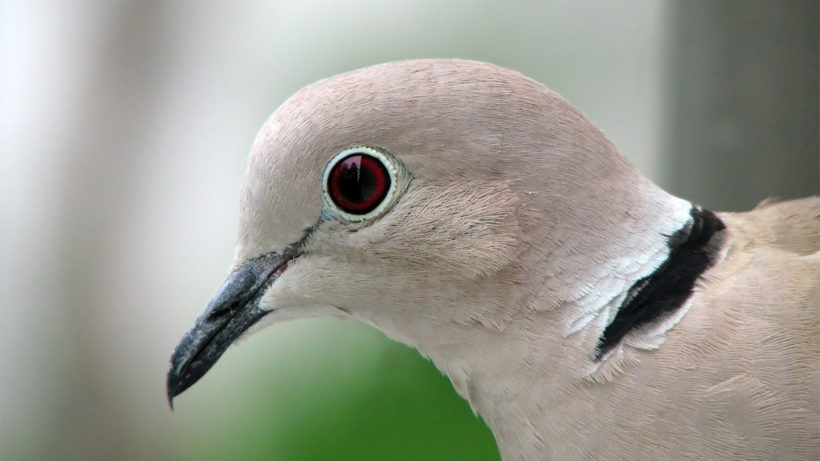
The Cornell Lab of Ornithology’s Great Backyard Bird Count and Project FeederWatch are two of the most popular projects. Both are very easy to do, even for those of us who are a bit disorganized. When I count for the Great Backyard Bird Watch, I note my sightings in a notebook, then note that in the GBBC’s user-friendly web site – no spreadsheets required. Other citizen science projects merely ask you to note when you’ve seen an American robin or hummingbird.
Many local nature centers, state fish and game departments and bird observatories offer opportunities to assist with bird banding, censuses and other activities. This is a great way to see birds up close and help conservation at the same time.
Incorporate Birding Into Other Activities
Observing a serious birder can give the impression that the activity demands foregoing all else, not excluding eating and sleeping.
I’ve found that birding actually goes well with other activities. You can identify birds whenever you are outdoors. In fact, I’ve had some of my most memorable sightings while fishing, hunting, hiking and cross-country skiing. You can simply pack along a field guide on your trip, and you’ll be surprised at the species you see, simply by being aware. And you can still enjoy a nice meal and cold brew at the end of the day.
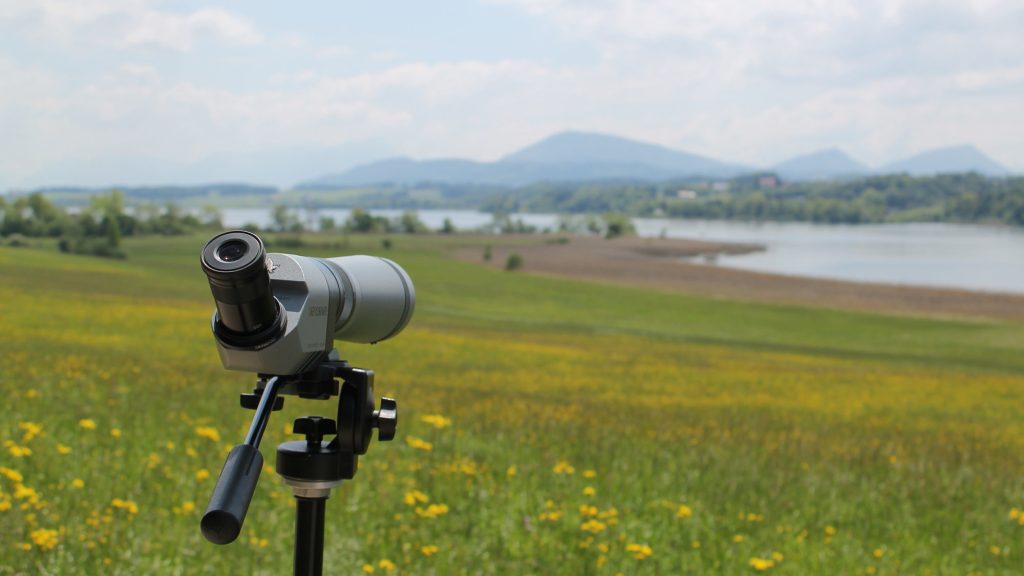



I’m enjoy learning to identify local birds and a bit of information about each. Any record keeping is in whatever photos I can capture at a respectful distance. To me the most facinating part of birding and nature watching in general is behavior. I’ve just moved to a new location well known for grebes doing dramatic mating dances across the water in May. Sure looking forward to experiencing that spectacle up close and personal for the first time. Thank you so much Matt for the fine write-up. Now I feel better about being only a casual birder.
Thanks for describing the many ways birds can bring us joy, Matt! Clearly this resonates with many based on the comments here. I know some people who talk about Birding as if it were an Olympic sport, open to only the most knowledgeable and ardent listers, and others who insist they aren’t Birders, but Bird Watchers, because that is really what they like to do – just watch birds. Thanks for giving some attention and validity to those of us who appreciate birds for just being birds – and all the other great things we enjoy observing in nature!
Hi – I love birds and watching them do stuff, but fussing about their species and so on ruins the fun. I have no list, and can’t figure out why anybody does unless they’re doing a scientific nature study for a practical purpose.
I agree. I don’t list. I do travel the world looking for birds but just to enjoy them not for listing. Big deal, a lifer. Is it bragging rights, the number of lifers. I also like to enjoy the surroundings which so many miss because they are so intent in getting that bird for their list. Same with many photographers. They sond so much time trying for the oerfect photo they miss enjoying the bird and get in the way. Plus many get too close to the bird. And what do they do with all of their photos.
Thank-you! I am also not a great list maker and found doing all the activities that you listed very rewarding. I participate in CBCs , Trumpeter Swan Counts, and Climate Change monitoring. I love taking time to watch the backyard feeder competition and birding on the golf course. I am not going to compete with list makers. I want to enjoy the experiance.
I loved your article! I love birds and birding. My husband and I travel and volunteer our time at National Parks, National Wildlife Refuges, and state parks. Our volunteer time is geared towards those places that offer an opportunity to learn more about wildlife and birds inparticular. I do not keep a life list except in my head. My husband loves to photograph (at a distance I might add). We have been privileged to work with Endangered Species such as California Condor, Piping plover, Masked bobwhite, and Whooping cranes. We have lead walks, talks and conducted surveys. We have learned so much and have been able to share that knowledge with others. All because of a love of nature and particularly birds. Thanks for a great and funny article!
I so agree! It reminds me of when I went on Safari in Africa and some people were so concerned about if the would see the “big five” or not. Really? You are in amazing landscape surrounded by all kinds of animals and it will ruin your trip if you don’t see the “big five”? I try to enjoy wherever I am and whatever nature I see. Anything I see, bird, deer, tree or otherwise makes my day more special.
I worked for years as a Biological Technician and got paid to bird surveys, yet I have never been a “lister.” My favorite way to bird is finding a nice comfy spot to sit – somewhere off-trail in the woods, in a field, along a stream, or just leaning against my neighbor’s old barn – then watching whatever comes by. It’s amazing what behaviors I see that I wouldn’t ever have noticed if I was walking or moving from place to place.
My favorite revelation was discovering that there was a mixed-species flock of insectivorous birds that moved through the forest together every day. If I wasn’t sitting in place day after day as they slowly moved through the forest past me, I might have just assumed it was a coincidence that I spotted those species in the same area.
Part of my work required that I be able to identify the songs and calls of hundreds of bird species. I still get a thrill being tuned in to the bird communities around me while I’m doing other things without ever having to see a bird, whether it’s hearing a Cassin’s finch as I walk through the parking lot to the grocery store or watching a movie and getting a laugh out of hearing an inappropriate bird species in the background.
One of my favorite birding memories is of a European starling who used to arrive in early spring and would sit on our TV antenna and imitate other bird songs. I would listen to it through our open windows. I quickly learned that I could accurately identify spring arrival dates of each bird species by when that starling started imitating their songs. It would almost always start singing a species’ song about 1-2 days before I observed that species myself. That went on for 3 years. I was broken hearted when it didn’t return the next spring.
I love taking new birders out, teaching them how to identify birds, and sharing their enthusiasm as they get familiar with what many experienced birders would consider “boring” (common) species. To me, that is much more fun than adding species to my list. I teach them to not only learn the key identifying marks from the field guide, but also to observe their overall shape, watch their behaviors, listen to their vocalizations, and pay attention to where they see them. We never just identify and move on.
Thank you for your blog, so interesting. I’m a very keen birder and try to keep a list but it’s never accurate or up to date!! Also am often distracted by little bugs, worms and even plants.
Matthew I enjoyed your article and big applause. I have been a relaxed birder all of my observable life. I recall being 3uears old getting up way early because I was signaled by the predawn blackbird chorus to watch the sunrise. I am 61 now. While I probably can tell you from memory my lifer birds, I much rather enjoy catching them on the fly. When I was walking thru a star park accidentally roused my first grouse out of the. Brush he was hding in California Union City off Mission Blvd Hayward hills. Or while riding in a car in NJ. Jamsburg during worst winter in ages 1992’93 I saw a snowy owl in a snowy feild. Maybe my first and onlyrare sightimg. In recent yrs Ive paired up w Cornel Lab as a citisen for nest watching amd other activities. Ive found it challenging to record om line spreadsheets and bemoaned my info still in my rainproof notebook not being reported
But the experiences made me better and inspired others.
Yes I can I’d neighborhood birds by sound where I live now in South Puget Sound here in the great state of Washington in the great Pacific North West. But I don’t belong to a local birding group or am I able to take magnificent photos. Maybe because I am too involved in just taking silently in. I do like to draw birds And behavior I see fromemory. I am now learning to paint them and other flowers need and trees in watercolor. I too found warblers baffling but still beautiful in sight and song. I saw many when my son and I loved in WV Carleston up on a ridge when I homeschooled him from K-2grade. Most breathtaking tho was a terrific mess of indigo burnings I observed there one early morning walk up a slippery trail.
Thank you for your words. Sry for a comment that begins an article itself or perhaps a memoir.
I enjoy birding very much but do not keep a life list or organize trips solely around birding either. I do enjoy the backyard bird count yearly as I can see the trends year to year for my yard by the month, s hobby I do first thing in the am while I am drinking coffee and slowly waking up. Net is I can totally relate to your blog on this !!
I love to walk and observe birds here on the a eastern shore of MD. I have never understood going in groups, I like the quiet of being alone and seems like you see much more that way. For the most part I’ve given up trying to remember names and species, I just enjoy the antics and behaviors. This is a great place to enjoy migratory birds and lots of waterfowl.
#9: Make a list. 🙂
I have been accused of not being an avid birder because I’m not an avid lister although I love to bird and am good at spotting, identifying and photographing birds and have done a lot of it my whole life. I keep an informal list via notes in bird guides and I have two bookshelves full of them but I do not have a life list and don’t want one. I have traveled to Indonesia, Vietnam, Africa, Alaska, Arizona central and south America on birding trips with avid listers from Idaho where I lived for 35 years. I’m just as excited to see a cool snake or frog or bug or orchid or volcano. But birding with religious listers can become tedious. Here’s an example. On a recent trip to Guyana after seeing tropical mockingbirds every day for five days, someone spotted one I had noticed but was keeping quiet about, then we had to take the time for everyone to find it for their DAY LIST! That’s when I start looking for lizards.
Thanks Matt or this cool blogpost. I’ve studied breeding birds in the desert for years, making daily lists, maps, nest cards, and vegetation surveys. I rarely make a list if I’m not working. I love to watch common birds and their behavior. I love to photograph and film them. One of my current projects is to see how many species I can film scratchin!
I almost never use glass, unless I’m using it for something else anyway. I’m more interested in bird calls and what are they telling me. Are they alarm calls because of me? Something else?
Meanwhile I wish there were an 11% tax on all paraphernalia and bird seed to help fund conservation the way there is on hunting equipment. Wildlife needs funding, desperately, and it’s time for birders to pay their share.